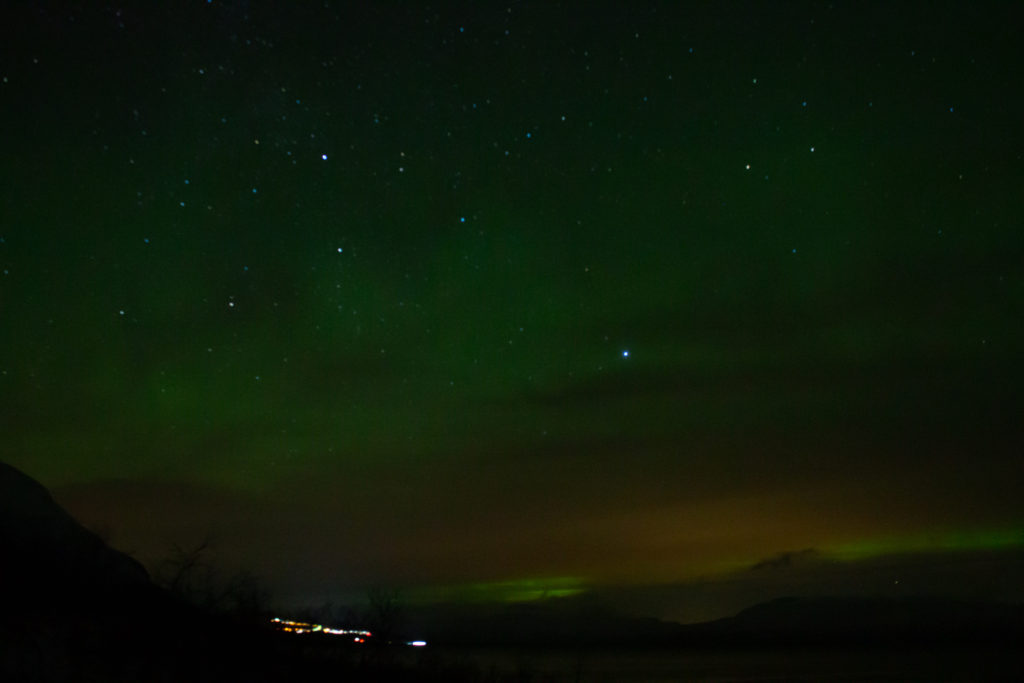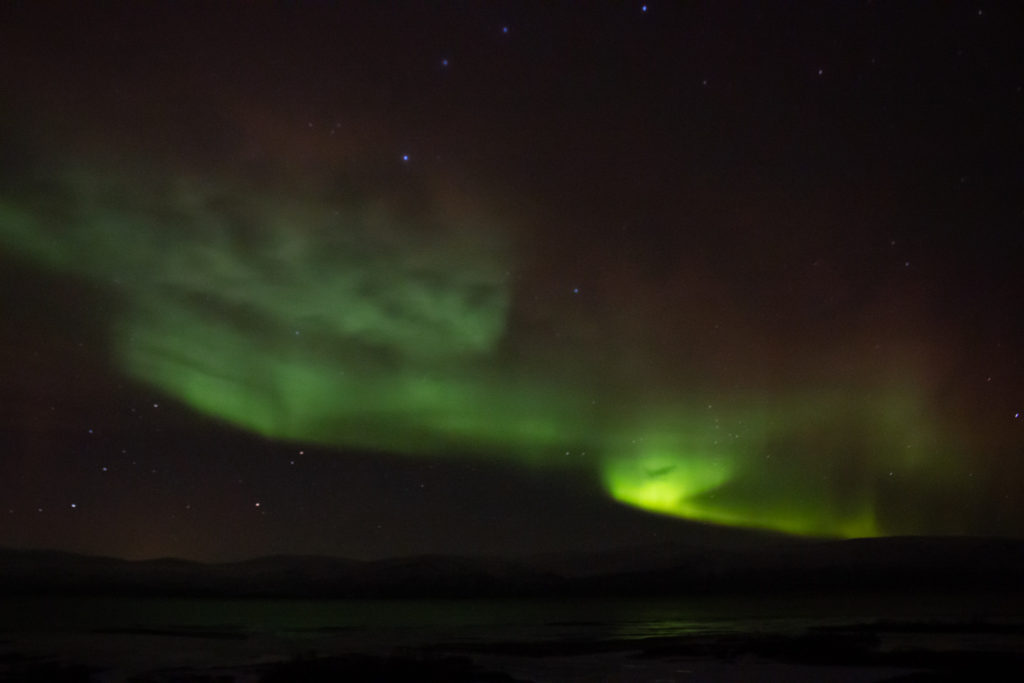In December 2020 I decided to go to Abisko (Sweden) to try to see the Nothern Lights (I currently live in Sweden). And I have (see the pictures and the video here. It wasn’t strong – what looks green on pictures (with long exposure) looked grey to the naked eye. I still want to go again and see the one that can look like my pictures, but without a camera in between… (The video is also just a bunch of pictures taken with long exposure I stuck together).
So, what do you need to know to see them? First, the location is important. Google for the best close to you. It should be rather far North. Book the trip for as many days as you can. You can never predict it absolutely, so it’s better to get as many chances as possible! Now, how do you choose the time to go?



- September to April are the times when you can expect to see it.
- KP-index should be high, that’s the most important criteria. It depends on location: in Abisko, which is really far North, you need it higher than 2 to see something, in Uppsala, where I live, it must be above 5 (which doesn’t happen often. To see the kp-forcest for several following days you can download the Aurora Forecast app. To see it further in time (it’s still not further than a month) you can go here and here. The best idea is to check it short-term and book a trip asap. I usually book well ahead, so I had to rely on my luck here.
- It should be as close to the new moon as possible (less of disturbing light). That is something you can check well ahead. This webpage shows both kp and the Moon phase.
- Weather. That is as important as kp. If there are clouds, you can’t see anything behind. Yet, totally unpredictable. Al you can do is to rely on your luck.
- If kp is around 2, you won’t see it with a naked eye. You can still take a nice picture (like mine on the left 🙂 ). Look for grey clouds. It might be a cloud or it may be it! The only way to check is to use your camera (some smartphones can to the long exposure as well, not mine though :)) with a long enough exposure. I’m totally not an expert, so you should google it if you want to take a great one, but the settings I used were around ISO 4000-6000, exposure 6-10 sec, f/5.
- Find a nice observation point. With less light and an open view to the North. Ask the reception. I found a great bird watching place close to Abisko STF 🙂
I booked a trip for 3 nights at first. Couldn’t see anything during those nights, mostly because of the weather (clouds) and some unlucky kp. So I extended the trip by one more night and scored! As I said, not the great one, yet I got my pictures. Still, I know some people who went and couldn’t see anything… You should be prepared for that. But also, plan well!
In Abisko I was staying at Abisko Mountain Lodge, which is a bit expensive, but very nice. I was planning to stay at STF Abisko mountain station, but it wasn’t fully open because of corona… There are lots on nice hikes around and tours to book (dogsledding, ice-climbing, etc) so you’ll enjoy the day time as well (while looking for Aurora at night). If you go there in December, you won’t see the sun at all (it’s above the polar circle!), but you’ll still get enough light, it’s not pitch dark!
Good luck!
